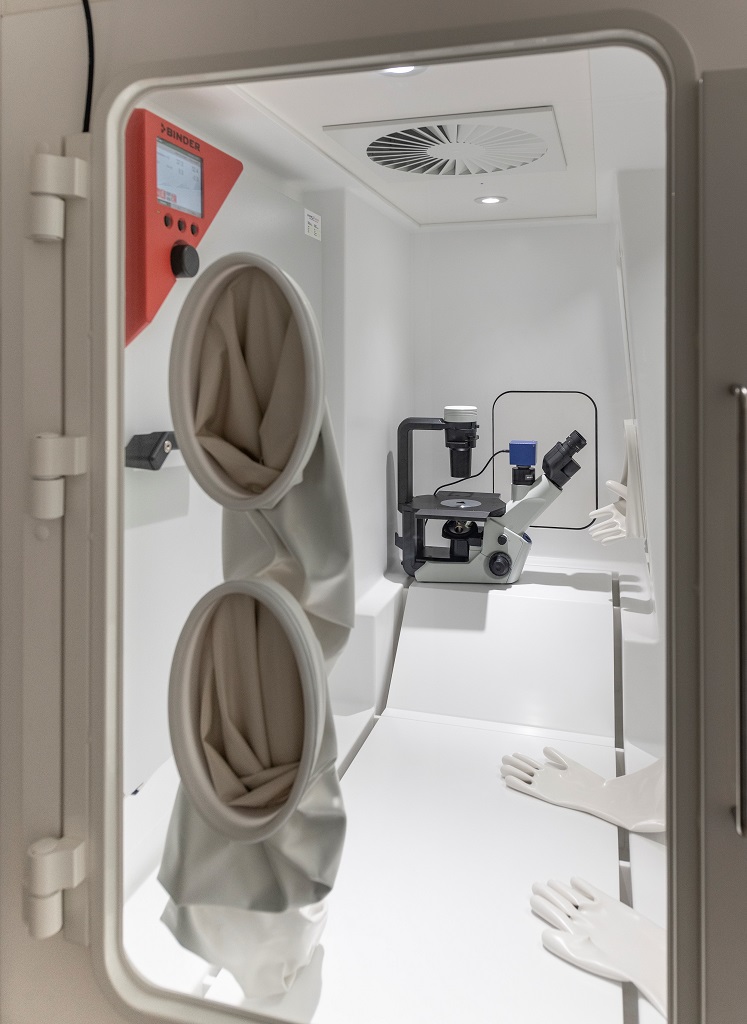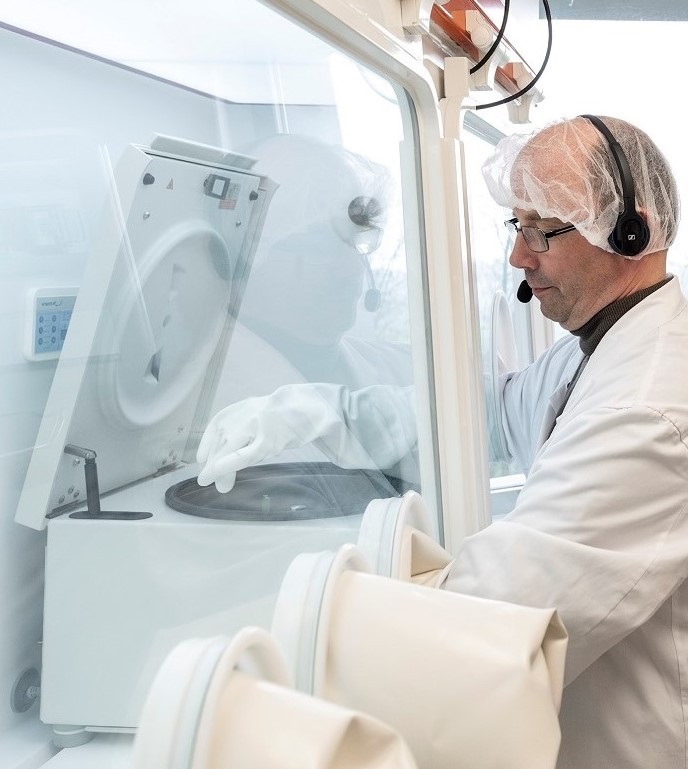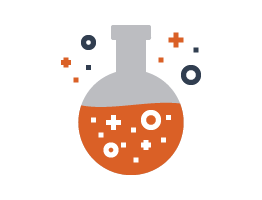
With isolators, you avoid any disruption to the containment of manufactured products and protect them from microbiological contamination originating from human operators or production environments. They ensure enhanced protection of products and operators, a considerably higher guarantee of sterility, and reduced costs for work, clothing and other cleanroom-related expenses.
What makes salamanderU’s cell culture and filling isolators so innovative is that we use a highly resistant acrylic resin – polymethyl methacrylate or PMMA – to build isolators tailored to your needs and available space. Isolators are usually made of stainless steel, which corrodes when subjected to frequent H2O2 decontamination cycles. Furthermore, stainless steel is not the best solution for optimal ergonomics or easy to shape in manufacturing processes.
salamanderU’s PMMA isolators maintain their integrity, no matter the number of decontamination cycles. The isolators are designed for operating in cleanliness conditions of grades D to A (ISO 8 to ISO 5) of cGMP requirements, meaning they are perfectly suited to aseptic manufacturing.
By using PMMA we can design isolators that best suit your production process, house all your equipment and optimize the ergonomics. The material is highly flexible, so the isolator can easily be adapted to changes in your manufacturing process if necessary.



salamanderU’s isolators are shaped according to your aseptic operations. They house all your equipment to better guarantee sterility. Whatever your needs or available space, we will make an isolator that improves the ergonomics of your manufacturing process unit. Want to change your processes? No problem, your isolator can easily be adapted thanks to PMMA.

Our isolators enhance automated bio-decontamination operations. They are easy to clean and disinfect. Working sections, material airlocks (MAL) and security airlock systems (SAS) can each be provided with an independent decontamination unit. These separate systems mean that some sections can go through a decontamination cycle, while you continue using others. Made of PMMA, they are highly resistant to decontamination products.

With their Human Machine Interface (HMI) touch screen, salamanderU’s isolators are easy to control. The touch screen manages the decontamination cycles in each section and verifies the status of the decontaminated sections. It also shows in real time whether doors are opened or closed, the status of filters, whether the valves of the decontamination and HVAC systems are opened or closed, and whether the HVAC systems have the correct flow rate.

The HMI touch screen can display several critical parameters such as temperature, pressure and relative humidity, which may affect your products’ characteristics. The parameters are shown for each section of the isolator and for the equipment connected, such as incubators and bioreactors.
You decide on the features you want. As an example, here is what one of our customers asked of a grade D environment. He wanted the isolator to contain four independent but interconnected main sections, each with an independent vaporized hydrogen peroxide (VHP) bio-decontamination system:
For another customer, we developed a full case study that compared the process costs of our customized isolator with those of a standard aseptic environment. The final results overwhelmingly favoured our customized isolator:
Contact us for a copy of the study presentation we made or to talk to one of our experts (hello@salamanderu.com).